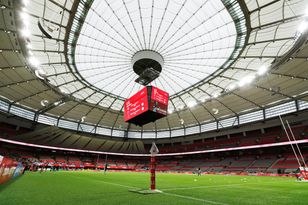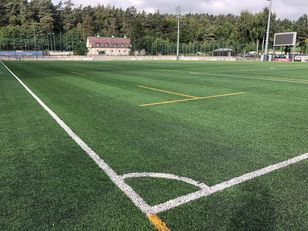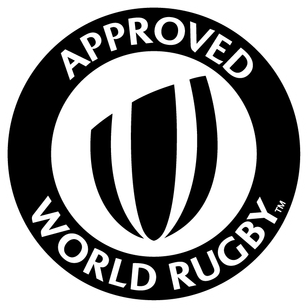Skin Injury Advice
Reducing Abrasion Risk
World Rugby are working to reduce skin abrasion risk on artificial turf via a new field test method which better represents a player-surface interaction in motion.
From this ongoing research, good field maintenance has been identified as a way to reduce the risk of injury. Key practices for facilities owning artificial fields are:
- Keeping fibres upright.
- Keeping infill mobile.
Artificial Turf Field Maintenance Recommendations
- Brushing:
Regular maintenance typically consists of brushing of the surface to keep infill mobile and fibres upright. This should be done using a tractor and brush. Brushing should also help remove debris from a surface (such as vegetation and mud) although a deep clean by an external contractor may be required following a a long period without maintenance. - Infill Decompaction:
While regular brushing should help, on occasion a more vigorous decompaction of the surface may be required using metal tines. This should be completed by a trained professional to avoid damaging the surface. - Infill Top Up:
Infill quantities should be checked periodically and topped up when required to meet the specifications of the system when it was installed. This helps support the yarn to stop it from going flat - Footwear:
Flat-soled shoes should not be used where possible as they adversely affect surface condition by compacting the infill. Players should always brush their boots when entering the pitch to remove any mud which can contaminate the system and cause the infill to become less mobile. - Irrigation:
Applying water to the field helps to keep the surface temperature down and also allows players to slide more freely. Watering should be done the night before use and then again the next morning to prevent the surface warming up throughout the day. Watering the surface the day before activity keeps the temperature down and stops water evaporation. Late kick offs or extreme conditions may require additional watering.
Additional guidance should also be sought from the turf manufacturer on the best maintenance practices for their products, and if any issues arise with performance or maintenance of the surface.
Player Mitigation
Players can consider the following options to mitigate the risk of skin injury:
- Wearing protective base-layers on their upper and lower limbs
- Using petroleum jelly as a lubricant to help the skin glide over the surface.
Medical staff can supply second skins or fixation tape to act as a protective layer between the skin and artificial turf.








